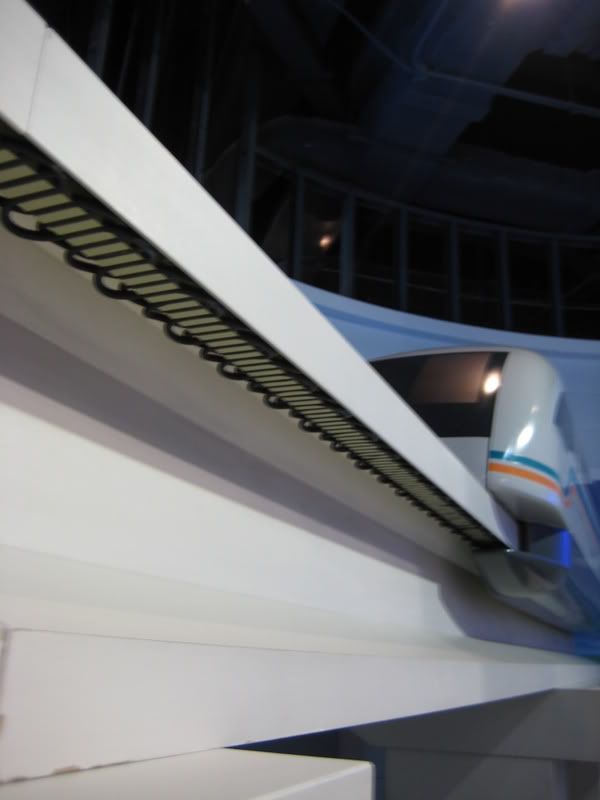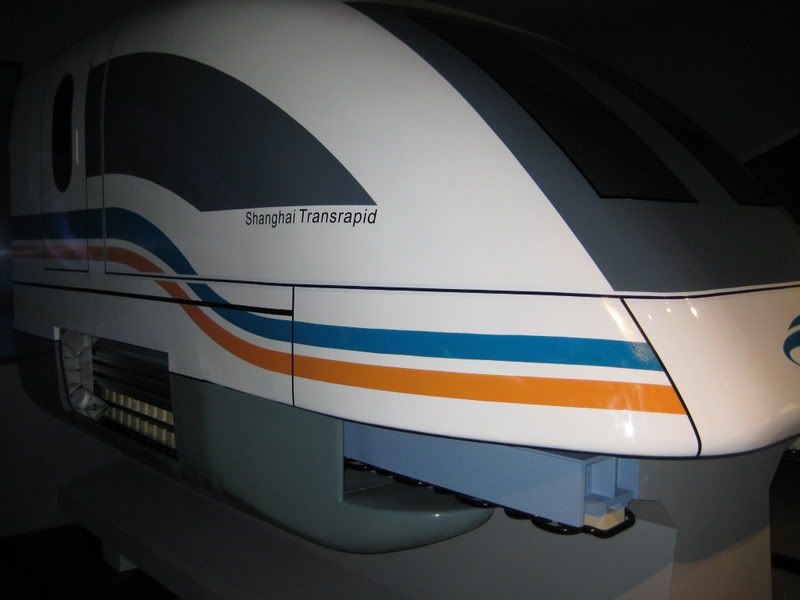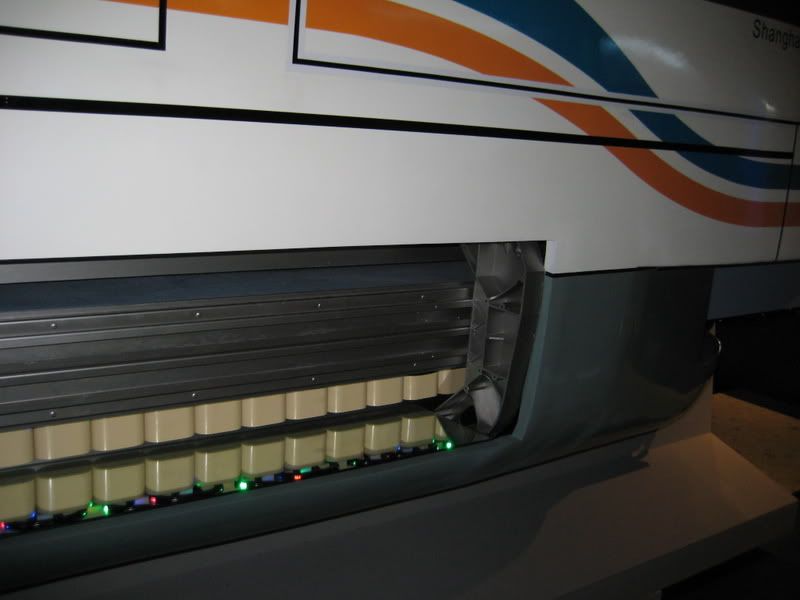My long-time obsession with trains was finally realized upon arrival in Shanghai when I embarked on my first ever maglev train ride. I have only discovered few days before leaving for Shanghai that they have high-speed maglev train! Upon arrival, I was so determined to get on it for a ride, even though HF has planned a rendezvous route for me -- by bus!
Single-way ticket costs 60¥. If not mistaken, you can get a 20% discount off the ticket's price if you can proof you've just landed (boarding pass or air ticket). 80¥ for a return trip.
I rode it twice!! It was a mind-blowing experience for me not only because it was my first time on a maglev train, but also because it traveled at 431 km/h for 2-3 minutes. Everything outside the train passed by in split seconds, especially the other train on the other track. It like like... try saying "Foooom!!" as fast as you could! that was how it sounded like when both train passes each other.
However, I was told that the local people do not use the SMT much. They say it is not worth paying for such a service -- expensive and inconvenient. There's a bus service that goes right to the departure hall (check-in counters) of PVG airport for only 20¥. On the other hand, the SMT stops at quite a distant whereby one would have to walk another 10 minutes (with baggages) to the departure hall.
Hmm, I just went for the experience! It was worth it! How else can I travel at 431 km/h on ground?! I can now proudly say that I have traveled on the Guinness World Record Magnetically Levitated train linking Shanghai's International Airport in Pudong to Shanghai's financial district in Longyang at the speed of 431 km/h!! On ground!
 Can We Give Up Wheels?
Can We Give Up Wheels?Can we give up wheels? It is simply unimaginable for people who are used to the thinking of wheel-rail system. But someone had, indeed, a miraculous idea in his mind and made the idea a reality. In 1922, Mr. Hermann Kemper, a German scientist, boldy put forward an idea of electromagnetic levitation. After the whole plan was worked out, Mr. Kemper applied for a patent on maglev trains in 1934. A maglev train was born on Mr. Kemper's design draft.
Kemper's Idea
In fact, the principle of magnetic levitation is not abstruse at all. It uses the character that "two pieces of magnets [similar poles] repel each other and two different in nature (opposite poles) attract each other" to make the magnet produce a force to resist against earth's gravity. With mental perception, Mr. Kemper employed this into the railway transportation system to make trains suspend on the railway without relying on wheels.
This was only the first step made by Mr. Kemper. In his second step, Kemper spread out rotated synchronous motors, installed the rotating motors beneath the car and placed the stators and coils of motors on the whole line of track. Once the power is switched on, the train and the track ecame a complete linear electric motor.
Kempter's maglev train levitated on the track without the need of wheels. It means that Kemper's train ran lightly, cleverly avoiding the contradiction of wheel and rail.
 A view from under the maglev track reveals the electromagnetic instruments that keeps the train floating. The vacumm distance between the train and the track is approximately 10mm.
A view from under the maglev track reveals the electromagnetic instruments that keeps the train floating. The vacumm distance between the train and the track is approximately 10mm.
 Guinness World Record certificate pronouncing the record holding speed of 431 km/h. Japan will surpass this speed in near future but their maglev train systems are not yet in operation.
Guinness World Record certificate pronouncing the record holding speed of 431 km/h. Japan will surpass this speed in near future but their maglev train systems are not yet in operation.
 The world is enormous;
My surroundings are amazing beyond descriptions;
My life occupies that little part of the enormity;
and for those of you who are unable to experience;
what my eyes sees, this is the place where I dump;
what my eyes explains to my brain.
The world is enormous;
My surroundings are amazing beyond descriptions;
My life occupies that little part of the enormity;
and for those of you who are unable to experience;
what my eyes sees, this is the place where I dump;
what my eyes explains to my brain.





No comments:
Post a Comment